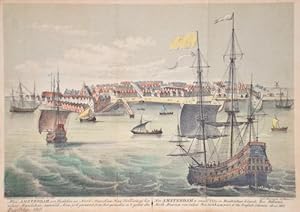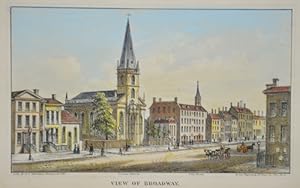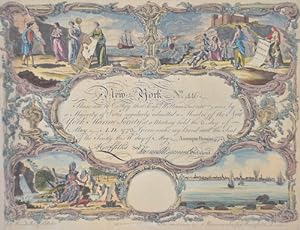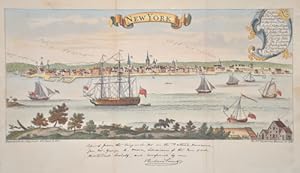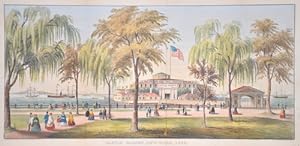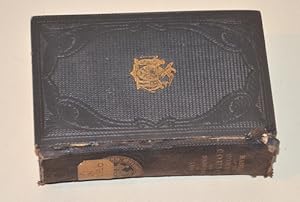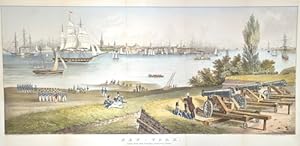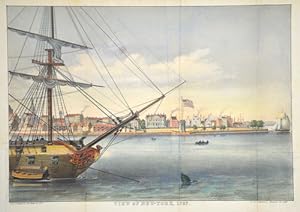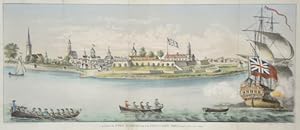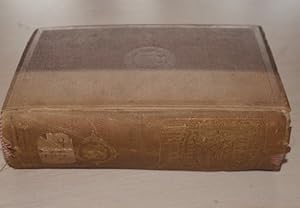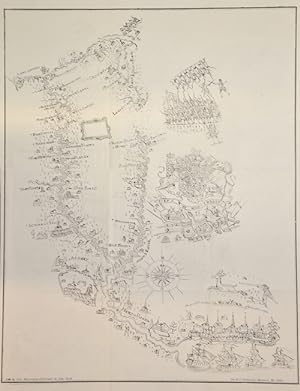central park books (109 results)
FeedbackSearch filters
Product Type
- All Product Types
- Books (100)
- Magazines & Periodicals (No further results match this refinement)
- Comics (No further results match this refinement)
- Sheet Music (No further results match this refinement)
- Art, Prints & Posters (9)
- Photographs (No further results match this refinement)
- Maps (No further results match this refinement)
- Manuscripts & Paper Collectibles (No further results match this refinement)
Condition
Binding
Collectible Attributes
- First Edition (No further results match this refinement)
- Signed (No further results match this refinement)
- Dust Jacket (No further results match this refinement)
- Seller-Supplied Images (25)
- Not Print on Demand (77)
Free Shipping
Seller Rating
-
The Problem with Pugs: A Love & Pets Romantic Comedy Series Novel (The Love & Pets Romantic Comedy Series)
Published by Central Park Books, 2018
ISBN 10: 099965523X ISBN 13: 9780999655238
Seller: SecondSale, Montgomery, IL, U.S.A.
Condition: USED_VERYGOOD. Item in very good condition! Textbooks may not include supplemental items i.e. CDs, access codes etc.
More buying choices from other sellers on AbeBooks
New offers from US$ 12.99
Used offers from US$ 7.94
Also find Softcover
-
The Predicament of Persians
Published by Central Park Books, 2020
ISBN 10: 0999655272 ISBN 13: 9780999655276
Seller: ThriftBooks-Dallas, Dallas, TX, U.S.A.
Paperback. Condition: USED_VERYGOOD. No Jacket. May have limited writing in cover pages. Pages are unmarked. ~ ThriftBooks: Read More, Spend Less 0.56.
More buying choices from other sellers on AbeBooks
New offers from US$ 10.29
Used offers from US$ 8.96
Also find Softcover
-
The Downside of Dachshunds (The Love & Pets Romantic Comedy Series)
Published by Central Park Books, 2019
ISBN 10: 0999655256 ISBN 13: 9780999655252
Seller: SecondSale, Montgomery, IL, U.S.A.
Condition: USED_GOOD. Item in good condition. Textbooks may not include supplemental items i.e. CDs, access codes etc.
More buying choices from other sellers on AbeBooks
New offers from US$ 13.04
Used offers from US$ 10.92
Also find Softcover
-
The Pandemonium of Pets: A Love & Pets Christmas Romance (Paperback or Softback)
Published by Central Park Books 11/19/2020, 2020
ISBN 10: 0999655299 ISBN 13: 9780999655290
Seller: BargainBookStores, Grand Rapids, MI, U.S.A.
Paperback or Softback. Condition: NEW. The Pandemonium of Pets: A Love & Pets Christmas Romance 0.41. Book.
-
The Conundrum of Collies (The Love & Pets Romantic Comedy Series)
Published by Central Park Books, 2020
ISBN 10: 0999655280 ISBN 13: 9780999655283
Seller: GF Books, Inc., Hawthorne, CA, U.S.A.
Condition: USED_VERYGOOD. Book is in Used-VeryGood condition. Pages and cover are clean and intact. Used items may not include supplementary materials such as CDs or access codes. May show signs of minor shelf wear and contain very limited notes and highlighting. 0.64.
More buying choices from other sellers on AbeBooks
New offers from US$ 12.52
Used offers from US$ 12.51
Also find Softcover
-
The Lessons of Labradors (Paperback or Softback)
Published by Central Park Books 3/15/2020, 2020
ISBN 10: 0999655264 ISBN 13: 9780999655269
Seller: BargainBookStores, Grand Rapids, MI, U.S.A.
Paperback or Softback. Condition: NEW. The Lessons of Labradors 0.59. Book.
More buying choices from other sellers on AbeBooks
New offers from US$ 13.03
Used offers from US$ 11.82
Also find Softcover
-
The Trouble with Tabbies (Paperback or Softback)
Published by Central Park Books 8/27/2019, 2019
ISBN 10: 0999655248 ISBN 13: 9780999655245
Seller: BargainBookStores, Grand Rapids, MI, U.S.A.
Paperback or Softback. Condition: NEW. The Trouble with Tabbies 0.58. Book.
More buying choices from other sellers on AbeBooks
New offers from US$ 13.04
Used offers from US$ 12.02
Also find Softcover
-
Span of Living
Published by Central Park Books, Malvern East, 1997
ISBN 10: 0646339257 ISBN 13: 9780646339252
Seller: Arapiles Mountain Books - Mount of Alex, Castlemaine, VIC, Australia
Soft Cover. Condition: UNSPECIFIED. Revised Edition. 8vo. original printed paper wraps (a trifle rubbed); pp. 86 (last blank). A near fine copy.
-
New Amsterdam a small City en Manhatten Island, New-Holland, North America now called New-York .
Published by Artist: Valentine's Manual/Hayward G DT ( - 1869 ) New York ; issued in: ; - David T (Thomas) Valentine (1801 - 1869) served as the Clerk of the Common Council of New York City He edited and published a series of New York City almanacs and fact books entitled Manual of the Corporation Of The City of New York Valentine's Manual as it came to be called included facts about the City of New York city council information city history and reported on the progress of public works such as Central Park The production of this annual manual was the responsibility of the Clerk of the City of New York a position held at different times by D Valentine and by Joseph Shannon who also produced a similar manual Valentine used his manual to reproduce some of, 1801
Art / Print / Poster
Condition: UNSPECIFIED. Technic: Lithography, colorit: colored, condition: Perfect condition, size (in cm): 17,5 x 25 cm; - View of the city New York with the Hudson river and decorative offshore ships in the foreground.; History: First voyages of discovery to the area of today's New York took place in 1524 by Giovanni da Verrazzano and in 1609 by Henry Hudson. Starting in 1610, Dutch merchants began a lucrative fur trade with the Indians living there. In March 1614, the newly formed Compagnie van Nieuwnederlant (New Netherland Company) was granted a monopoly by the States General to trade in the area. In October 1618, ten months after the trade monopoly expired, the company applied for a new charter. At that time, however, the States General were already considering the creation of a new company, the Dutch West India Company (WIC). On June 3, 1621, the WIC received a charter from the Republic of the Seven United Provinces to trade solely in the Americas. Colonization began in 1624 when 30 Dutch, Walloon and French families settled on Manhattan Island and in the Delaware area. According to legend, in 1626 Peter Minuit bought the island from the natives, probably a branch of the Lenni-Lenape Indians who called the island "Manna-hatta", for 60 guilders.The newly founded settlement was named Nieuw Amsterdam and became the capital of the colony of Nieuw Nederland.Chaotic conditions soon prevailed in the settlement. Under the rule of corrupt governors, crime increased enormously.In 1647, the Dutch West India Company decided to restore order. Petrus Stuyvesant was to take on this task. During his 17-year term as governor, the first hospital, the first prison and the first school were built. As protection against raids, he had a wall built across the island to the north of the city in 1652, which would later give its name to the street running along it, Wall Street. On February 2, 1653, Nieuw Amsterdam received its city charter. On September 8, 1664, the city surrendered without a fight to a Royal Navy fleet led by Richard Nicolls.The English named the city and the colony of New York after their then commander James, Duke of York, brother of Charles II of England, who later became king himself. In 1667, the Dutch relinquished all claims to the colony in the Peace of Breda, in which they were granted rights to Suriname in exchange. In the ensuing Third Anglo-Dutch War, the Dutch briefly retook the colony in 1673 through Cornelis Evertsen before finally having to surrender the land by signing the Treaty of Westminster on February 19, 1674. From 1788 to 1790, New York was the capital of the United States. George Washington was sworn in as the first president on the balcony of New York's Federal Hall in 1789. In the difficult economic times following the war, securities traders established the New York Stock Exchange on May 17, 1792. On April 13, 1796, the first elephant in America arrived in New York Harbor. In 1797, Albany was designated the capital of New York State instead of New York and remains so today.
-
View of Broadway
Published by Artist: Valentine's Manual/Hayward G DT ( - 1869 ) New York ; issued in: New York; - David T (Thomas) Valentine (1801 - 1869) served as the Clerk of the Common Council of New York City He edited and published a series of New York City almanacs and fact books entitled Manual of the Corporation Of The City of New York Valentine's Manual as it came to be called included facts about the City of New York city council information city history and reported on the progress of public works such as Central Park The production of this annual manual was the responsibility of the Clerk of the City of New York a position held at different times by D Valentine and by Joseph Shannon who also produced a similar manual Valentine used his manual to reproduce, 1801
Art / Print / Poster
Condition: UNSPECIFIED. Technic: Lithography, colorit: colored, condition: Very good, size (in cm): 9 x 15; - The Broadway in New York; History: First voyages of discovery to the area of today's New York took place in 1524 by Giovanni da Verrazzano and in 1609 by Henry Hudson. Starting in 1610, Dutch merchants began a lucrative fur trade with the Indians living there. In March 1614, the newly formed Compagnie van Nieuwnederlant (New Netherland Company) was granted a monopoly by the States General to trade in the area. In October 1618, ten months after the trade monopoly expired, the company applied for a new charter. At that time, however, the States General were already considering the creation of a new company, the Dutch West India Company (WIC). On June 3, 1621, the WIC received a charter from the Republic of the Seven United Provinces to trade solely in the Americas. Colonization began in 1624 when 30 Dutch, Walloon and French families settled on Manhattan Island and in the Delaware area. According to legend, in 1626 Peter Minuit bought the island from the natives, probably a branch of the Lenni-Lenape Indians who called the island "Manna-hatta", for 60 guilders.The newly founded settlement was named Nieuw Amsterdam and became the capital of the colony of Nieuw Nederland.Chaotic conditions soon prevailed in the settlement. Under the rule of corrupt governors, crime increased enormously.In 1647, the Dutch West India Company decided to restore order. Petrus Stuyvesant was to take on this task. During his 17-year term as governor, the first hospital, the first prison and the first school were built. As protection against raids, he had a wall built across the island to the north of the city in 1652, which would later give its name to the street running along it, Wall Street. On February 2, 1653, Nieuw Amsterdam received its city charter. On September 8, 1664, the city surrendered without a fight to a Royal Navy fleet led by Richard Nicolls.The English named the city and the colony of New York after their then commander James, Duke of York, brother of Charles II of England, who later became king himself. In 1667, the Dutch relinquished all claims to the colony in the Peace of Breda, in which they were granted rights to Suriname in exchange. In the ensuing Third Anglo-Dutch War, the Dutch briefly retook the colony in 1673 through Cornelis Evertsen before finally having to surrender the land by signing the Treaty of Westminster on February 19, 1674. From 1788 to 1790, New York was the capital of the United States. George Washington was sworn in as the first president on the balcony of New York's Federal Hall in 1789. In the difficult economic times following the war, securities traders established the New York Stock Exchange on May 17, 1792. On April 13, 1796, the first elephant in America arrived in New York Harbor. In 1797, Albany was designated the capital of New York State instead of New York and remains so today.
-
Launch of the steam Frigate Fulton the First, at New York 29th Oct. 1814
Published by Artist: Valentine's Manual/Hayward G DT ( - 1869 ) New York ; issued in: New York; - David T (Thomas) Valentine (1801 - 1869) served as the Clerk of the Common Council of New York City He edited and published a series of New York City almanacs and fact books entitled Manual of the Corporation Of The City of New York Valentine's Manual as it came to be called included facts about the City of New York city council information city history and reported on the progress of public works such as Central Park The production of this annual manual was the responsibility of the Clerk of the City of New York a position held at different times by D Valentine and by Joseph Shannon who also produced a similar manual Valentine used his manual to reproduce, 1801
Art / Print / Poster
Condition: UNSPECIFIED. Technic: Lithography, colorit: original colored, condition: Very good, size (in cm): 18 x 36,5; - View of the Harbour of New York and the launch of Fulton I.; History: First voyages of discovery to the area of today's New York took place in 1524 by Giovanni da Verrazzano and in 1609 by Henry Hudson. Starting in 1610, Dutch merchants began a lucrative fur trade with the Indians living there. In March 1614, the newly formed Compagnie van Nieuwnederlant (New Netherland Company) was granted a monopoly by the States General to trade in the area. In October 1618, ten months after the trade monopoly expired, the company applied for a new charter. At that time, however, the States General were already considering the creation of a new company, the Dutch West India Company (WIC). On June 3, 1621, the WIC received a charter from the Republic of the Seven United Provinces to trade solely in the Americas. Colonization began in 1624 when 30 Dutch, Walloon and French families settled on Manhattan Island and in the Delaware area. According to legend, in 1626 Peter Minuit bought the island from the natives, probably a branch of the Lenni-Lenape Indians who called the island "Manna-hatta", for 60 guilders.The newly founded settlement was named Nieuw Amsterdam and became the capital of the colony of Nieuw Nederland.Chaotic conditions soon prevailed in the settlement. Under the rule of corrupt governors, crime increased enormously.In 1647, the Dutch West India Company decided to restore order. Petrus Stuyvesant was to take on this task. During his 17-year term as governor, the first hospital, the first prison and the first school were built. As protection against raids, he had a wall built across the island to the north of the city in 1652, which would later give its name to the street running along it, Wall Street. On February 2, 1653, Nieuw Amsterdam received its city charter. On September 8, 1664, the city surrendered without a fight to a Royal Navy fleet led by Richard Nicolls.The English named the city and the colony of New York after their then commander James, Duke of York, brother of Charles II of England, who later became king himself. In 1667, the Dutch relinquished all claims to the colony in the Peace of Breda, in which they were granted rights to Suriname in exchange. In the ensuing Third Anglo-Dutch War, the Dutch briefly retook the colony in 1673 through Cornelis Evertsen before finally having to surrender the land by signing the Treaty of Westminster on February 19, 1674. From 1788 to 1790, New York was the capital of the United States. George Washington was sworn in as the first president on the balcony of New York's Federal Hall in 1789. In the difficult economic times following the war, securities traders established the New York Stock Exchange on May 17, 1792. On April 13, 1796, the first elephant in America arrived in New York Harbor. In 1797, Albany was designated the capital of New York State instead of New York and remains so today.
-
New-York No. 446 These are to Certify that Capt William Turner was by a Majority of Notes regularly admitted a Member of the New York Marine Society.
Published by Artist: Valentine's Manual/Hayward G DT ( - 1869 ) New York ; issued in: New York; - David T (Thomas) Valentine (1801 - 1869) served as the Clerk of the Common Council of New York City He edited and published a series of New York City almanacs and fact books entitled Manual of the Corporation Of The City of New York Valentine's Manual as it came to be called included facts about the City of New York city council information city history and reported on the progress of public works such as Central Park The production of this annual manual was the responsibility of the Clerk of the City of New York a position held at different times by D Valentine and by Joseph Shannon who also produced a similar manual Valentine used his manual to reproduce, 1801
Art / Print / Poster
Condition: UNSPECIFIED. Technic: Lithography, colorit: original colored, condition: Some folds perfectly restored, size (in cm): 20,5 x 27 cm; - Certificate of membership of the New York Marine Society. New-York No. 446 - These are to Certify that Capt William Turner was by a Majority of Notes regularly admitted a Member of the New York Marine Society at a meeting held the 3 day of May 1773. Given under my Hand and the Seal of the Society this 11 day of May 1773.; History: First voyages of discovery to the area of today's New York took place in 1524 by Giovanni da Verrazzano and in 1609 by Henry Hudson. Starting in 1610, Dutch merchants began a lucrative fur trade with the Indians living there. In March 1614, the newly formed Compagnie van Nieuwnederlant (New Netherland Company) was granted a monopoly by the States General to trade in the area. In October 1618, ten months after the trade monopoly expired, the company applied for a new charter. At that time, however, the States General were already considering the creation of a new company, the Dutch West India Company (WIC). On June 3, 1621, the WIC received a charter from the Republic of the Seven United Provinces to trade solely in the Americas. Colonization began in 1624 when 30 Dutch, Walloon and French families settled on Manhattan Island and in the Delaware area. According to legend, in 1626 Peter Minuit bought the island from the natives, probably a branch of the Lenni-Lenape Indians who called the island "Manna-hatta", for 60 guilders.The newly founded settlement was named Nieuw Amsterdam and became the capital of the colony of Nieuw Nederland.Chaotic conditions soon prevailed in the settlement. Under the rule of corrupt governors, crime increased enormously.In 1647, the Dutch West India Company decided to restore order. Petrus Stuyvesant was to take on this task. During his 17-year term as governor, the first hospital, the first prison and the first school were built. As protection against raids, he had a wall built across the island to the north of the city in 1652, which would later give its name to the street running along it, Wall Street. On February 2, 1653, Nieuw Amsterdam received its city charter. On September 8, 1664, the city surrendered without a fight to a Royal Navy fleet led by Richard Nicolls.The English named the city and the colony of New York after their then commander James, Duke of York, brother of Charles II of England, who later became king himself. In 1667, the Dutch relinquished all claims to the colony in the Peace of Breda, in which they were granted rights to Suriname in exchange. In the ensuing Third Anglo-Dutch War, the Dutch briefly retook the colony in 1673 through Cornelis Evertsen before finally having to surrender the land by signing the Treaty of Westminster on February 19, 1674. From 1788 to 1790, New York was the capital of the United States. George Washington was sworn in as the first president on the balcony of New York's Federal Hall in 1789. In the difficult economic times following the war, securities traders established the New York Stock Exchange on May 17, 1792. On April 13, 1796, the first elephant in America arrived in New York Harbor. In 1797, Albany was designated the capital of New York State instead of New York and remains so today.
-
New York
Published by Artist: Valentine's Manual/Hayward G DT ( - 1869 ) New York ; issued in: ; - David T (Thomas) Valentine (1801 - 1869) served as the Clerk of the Common Council of New York City He edited and published a series of New York City almanacs and fact books entitled Manual of the Corporation Of The City of New York Valentine's Manual as it came to be called included facts about the City of New York city council information city history and reported on the progress of public works such as Central Park The production of this annual manual was the responsibility of the Clerk of the City of New York a position held at different times by D Valentine and by Joseph Shannon who also produced a similar manual Valentine used his manual to reproduce some of, 1801
Art / Print / Poster
Condition: UNSPECIFIED. Technic: Lithography, colorit: colored, condition: Very good, size (in cm): 15 x 26; - View of the city New York with the Hudson river; History: First voyages of discovery to the area of today's New York took place in 1524 by Giovanni da Verrazzano and in 1609 by Henry Hudson. Starting in 1610, Dutch merchants began a lucrative fur trade with the Indians living there. In March 1614, the newly formed Compagnie van Nieuwnederlant (New Netherland Company) was granted a monopoly by the States General to trade in the area. In October 1618, ten months after the trade monopoly expired, the company applied for a new charter. At that time, however, the States General were already considering the creation of a new company, the Dutch West India Company (WIC). On June 3, 1621, the WIC received a charter from the Republic of the Seven United Provinces to trade solely in the Americas. Colonization began in 1624 when 30 Dutch, Walloon and French families settled on Manhattan Island and in the Delaware area. According to legend, in 1626 Peter Minuit bought the island from the natives, probably a branch of the Lenni-Lenape Indians who called the island "Manna-hatta", for 60 guilders.The newly founded settlement was named Nieuw Amsterdam and became the capital of the colony of Nieuw Nederland.Chaotic conditions soon prevailed in the settlement. Under the rule of corrupt governors, crime increased enormously.In 1647, the Dutch West India Company decided to restore order. Petrus Stuyvesant was to take on this task. During his 17-year term as governor, the first hospital, the first prison and the first school were built. As protection against raids, he had a wall built across the island to the north of the city in 1652, which would later give its name to the street running along it, Wall Street. On February 2, 1653, Nieuw Amsterdam received its city charter. On September 8, 1664, the city surrendered without a fight to a Royal Navy fleet led by Richard Nicolls.The English named the city and the colony of New York after their then commander James, Duke of York, brother of Charles II of England, who later became king himself. In 1667, the Dutch relinquished all claims to the colony in the Peace of Breda, in which they were granted rights to Suriname in exchange. In the ensuing Third Anglo-Dutch War, the Dutch briefly retook the colony in 1673 through Cornelis Evertsen before finally having to surrender the land by signing the Treaty of Westminster on February 19, 1674. From 1788 to 1790, New York was the capital of the United States. George Washington was sworn in as the first president on the balcony of New York's Federal Hall in 1789. In the difficult economic times following the war, securities traders established the New York Stock Exchange on May 17, 1792. On April 13, 1796, the first elephant in America arrived in New York Harbor. In 1797, Albany was designated the capital of New York State instead of New York and remains so today.
-
Castle Garden, New-York, 1852.
Published by Artist: Valentine's Manual/Hayward G DT ( - 1869 ) New York ; issued in: New York; - David T (Thomas) Valentine (1801 - 1869) served as the Clerk of the Common Council of New York City He edited and published a series of New York City almanacs and fact books entitled Manual of the Corporation Of The City of New York Valentine's Manual as it came to be called included facts about the City of New York city council information city history and reported on the progress of public works such as Central Park The production of this annual manual was the responsibility of the Clerk of the City of New York a position held at different times by D Valentine and by Joseph Shannon who also produced a similar manual Valentine used his manual to reproduce, 1801
Art / Print / Poster
Condition: UNSPECIFIED. Technic: Lithography, colorit: original colored, condition: Some folds, size (in cm): 15,5 x 32 cm; - View shows the Palace Gardens in New York during the time when it was used as an entertainment center. This was originally built as a military fortress. Based on the original drawing by G. Hayward.; History: First voyages of discovery to the area of today's New York took place in 1524 by Giovanni da Verrazzano and in 1609 by Henry Hudson. Starting in 1610, Dutch merchants began a lucrative fur trade with the Indians living there. In March 1614, the newly formed Compagnie van Nieuwnederlant (New Netherland Company) was granted a monopoly by the States General to trade in the area. In October 1618, ten months after the trade monopoly expired, the company applied for a new charter. At that time, however, the States General were already considering the creation of a new company, the Dutch West India Company (WIC). On June 3, 1621, the WIC received a charter from the Republic of the Seven United Provinces to trade solely in the Americas. Colonization began in 1624 when 30 Dutch, Walloon and French families settled on Manhattan Island and in the Delaware area. According to legend, in 1626 Peter Minuit bought the island from the natives, probably a branch of the Lenni-Lenape Indians who called the island "Manna-hatta", for 60 guilders.The newly founded settlement was named Nieuw Amsterdam and became the capital of the colony of Nieuw Nederland.Chaotic conditions soon prevailed in the settlement. Under the rule of corrupt governors, crime increased enormously.In 1647, the Dutch West India Company decided to restore order. Petrus Stuyvesant was to take on this task. During his 17-year term as governor, the first hospital, the first prison and the first school were built. As protection against raids, he had a wall built across the island to the north of the city in 1652, which would later give its name to the street running along it, Wall Street. On February 2, 1653, Nieuw Amsterdam received its city charter. On September 8, 1664, the city surrendered without a fight to a Royal Navy fleet led by Richard Nicolls.The English named the city and the colony of New York after their then commander James, Duke of York, brother of Charles II of England, who later became king himself. In 1667, the Dutch relinquished all claims to the colony in the Peace of Breda, in which they were granted rights to Suriname in exchange. In the ensuing Third Anglo-Dutch War, the Dutch briefly retook the colony in 1673 through Cornelis Evertsen before finally having to surrender the land by signing the Treaty of Westminster on February 19, 1674. From 1788 to 1790, New York was the capital of the United States. George Washington was sworn in as the first president on the balcony of New York's Federal Hall in 1789. In the difficult economic times following the war, securities traders established the New York Stock Exchange on May 17, 1792. On April 13, 1796, the first elephant in America arrived in New York Harbor. In 1797, Albany was designated the capital of New York State instead of New York and remains so today.
-
Manual of the Common Council of New-York 1862
Published by Artist: Valentine's Manual/Hayward G DT ( - 1869 ) New York ; issued in: New York; - David T (Thomas) Valentine (1801 - 1869) served as the Clerk of the Common Council of New York City He edited and published a series of New York City almanacs and fact books entitled Manual of the Corporation Of The City of New York Valentine's Manual as it came to be called included facts about the City of New York city council information city history and reported on the progress of public works such as Central Park The production of this annual manual was the responsibility of the Clerk of the City of New York a position held at different times by D Valentine and by Joseph Shannon who also produced a similar manual Valentine used his manual to reproduce, 1801
Condition: UNSPECIFIED. Technic: Lithography, colorit: black/white, condition: Binding with embossed hard cover and gold embossing, breaking point, size (in cm): 19 x 13,5 cm; - Manual of New York with 1 folding map and 42 chromolithography views. Full brown embossed leather with gilt spine and cover. Old New York map showing Dutch activities in the East Village. Illustrations complete according to the "Index to the Illustrations in the Manuals of the Corporation of the City of New York", The "Manuals of the Corporation" were directories of extensive historical and contemporary records of New York compiled by D.T. Valentine. These books contain detailed information on City Council meetings, ordinances passed, public officials, the city's debts, directories of hospitals, almshouses, and schools, ferry schedules, lists of public carriers, demographic and census information, and descriptions of historic buildings and streets. Much of the information comes from Dutch and English sources edited by Valentine. Notable illustrations in this edition include "New York, c. 1790."; History: Under the discovery of Americans, we understand the first sighting of the continent by seafarers from the global civilization. Around 1000, the Vikings established a short-lived settlement in Newfoundland, now known as L'Anse aux Meadows. Speculations exist about other Old World discoveries of the New World, but none of these are generally or completely accepted by most scholars. Spain sponsored a major exploration led by Italian explorer Christopher Columbus in 1492; it quickly led to extensive European colonization of the Americas. The Europeans brought Old World diseases which are thought to have caused catastrophic epidemics and a huge decrease of the native population. Columbus came at a time in which many technical developments in sailing techniques and communication made it possible to report his voyages easily and to spread word of them throughout Europe. It was also a time of growing religious, imperial and economic rivalries that led to a competition for the establishment of colonies. The formation of sovereign states in the New World began with the United States Declaration of Independence of 1776. The American Revolutionary War lasted through the period of the Siege of Yorktown ? its last major campaign ? in the early autumn of 1781, with peace being achieved in 1783. The Spanish colonies won their independence in the first quarter of the 19th century, in the Spanish American wars of independence. Simón Bolívar and José de San Martín, among others, led their independence struggle. Although Bolivar attempted to keep the Spanish-speaking parts of Latin America politically allied, they rapidly became independent of one another as well, and several further wars were fought, such as the Paraguayan War and the War of the Pacific. (See Latin American integration.) In the Portuguese colony Dom Pedro I (also Pedro IV of Portugal), son of the Portuguese king Dom João VI, proclaimed the country's independence in 1822 and became Brazil's first Emperor. This was peacefully accepted by the crown in Portugal, upon compensation.
-
New-York. Taken from Fort Columbus, Governors Island. 1816
Published by Artist: Valentine's Manual/Hayward G DT ( - 1869 ) New York ; issued in: New York; - David T (Thomas) Valentine (1801 - 1869) served as the Clerk of the Common Council of New York City He edited and published a series of New York City almanacs and fact books entitled Manual of the Corporation Of The City of New York Valentine's Manual as it came to be called included facts about the City of New York city council information city history and reported on the progress of public works such as Central Park The production of this annual manual was the responsibility of the Clerk of the City of New York a position held at different times by D Valentine and by Joseph Shannon who also produced a similar manual Valentine used his manual to reproduce, 1801
Art / Print / Poster
Condition: UNSPECIFIED. Technic: Lithography, colorit: original colored, condition: Left margin partly enlarged., size (in cm): 21 x 46 cm; - New-York in 1816. This view, which shows New York City as it appears from Fort Columbus on Governor's Island, was issued in the 1860 edition of Valentine's Manual. Ships fill the harbor, fishermen ply the shore and some soldiers drill. Engraved by the artist George Hayward.; History: First voyages of discovery to the area of today's New York took place in 1524 by Giovanni da Verrazzano and in 1609 by Henry Hudson. Starting in 1610, Dutch merchants began a lucrative fur trade with the Indians living there. In March 1614, the newly formed Compagnie van Nieuwnederlant (New Netherland Company) was granted a monopoly by the States General to trade in the area. In October 1618, ten months after the trade monopoly expired, the company applied for a new charter. At that time, however, the States General were already considering the creation of a new company, the Dutch West India Company (WIC). On June 3, 1621, the WIC received a charter from the Republic of the Seven United Provinces to trade solely in the Americas. Colonization began in 1624 when 30 Dutch, Walloon and French families settled on Manhattan Island and in the Delaware area. According to legend, in 1626 Peter Minuit bought the island from the natives, probably a branch of the Lenni-Lenape Indians who called the island "Manna-hatta", for 60 guilders.The newly founded settlement was named Nieuw Amsterdam and became the capital of the colony of Nieuw Nederland.Chaotic conditions soon prevailed in the settlement. Under the rule of corrupt governors, crime increased enormously.In 1647, the Dutch West India Company decided to restore order. Petrus Stuyvesant was to take on this task. During his 17-year term as governor, the first hospital, the first prison and the first school were built. As protection against raids, he had a wall built across the island to the north of the city in 1652, which would later give its name to the street running along it, Wall Street. On February 2, 1653, Nieuw Amsterdam received its city charter. On September 8, 1664, the city surrendered without a fight to a Royal Navy fleet led by Richard Nicolls.The English named the city and the colony of New York after their then commander James, Duke of York, brother of Charles II of England, who later became king himself. In 1667, the Dutch relinquished all claims to the colony in the Peace of Breda, in which they were granted rights to Suriname in exchange. In the ensuing Third Anglo-Dutch War, the Dutch briefly retook the colony in 1673 through Cornelis Evertsen before finally having to surrender the land by signing the Treaty of Westminster on February 19, 1674. From 1788 to 1790, New York was the capital of the United States. George Washington was sworn in as the first president on the balcony of New York's Federal Hall in 1789. In the difficult economic times following the war, securities traders established the New York Stock Exchange on May 17, 1792. On April 13, 1796, the first elephant in America arrived in New York Harbor. In 1797, Albany was designated the capital of New York State instead of New York and remains so today.
-
View of New York, 1787
Published by Artist: Valentine's Manual/Hayward G DT ( - 1869 ) New York ; issued in: New York; - David T (Thomas) Valentine (1801 - 1869) served as the Clerk of the Common Council of New York City He edited and published a series of New York City almanacs and fact books entitled Manual of the Corporation Of The City of New York Valentine's Manual as it came to be called included facts about the City of New York city council information city history and reported on the progress of public works such as Central Park The production of this annual manual was the responsibility of the Clerk of the City of New York a position held at different times by D Valentine and by Joseph Shannon who also produced a similar manual Valentine used his manual to reproduce, 1801
Art / Print / Poster
Condition: UNSPECIFIED. Technic: Lithography, colorit: colored, condition: Very good, size (in cm): 20,5 x 28,5; - View if the city of New York from the harbour; History: First voyages of discovery to the area of today's New York took place in 1524 by Giovanni da Verrazzano and in 1609 by Henry Hudson. Starting in 1610, Dutch merchants began a lucrative fur trade with the Indians living there. In March 1614, the newly formed Compagnie van Nieuwnederlant (New Netherland Company) was granted a monopoly by the States General to trade in the area. In October 1618, ten months after the trade monopoly expired, the company applied for a new charter. At that time, however, the States General were already considering the creation of a new company, the Dutch West India Company (WIC). On June 3, 1621, the WIC received a charter from the Republic of the Seven United Provinces to trade solely in the Americas. Colonization began in 1624 when 30 Dutch, Walloon and French families settled on Manhattan Island and in the Delaware area. According to legend, in 1626 Peter Minuit bought the island from the natives, probably a branch of the Lenni-Lenape Indians who called the island "Manna-hatta", for 60 guilders.The newly founded settlement was named Nieuw Amsterdam and became the capital of the colony of Nieuw Nederland.Chaotic conditions soon prevailed in the settlement. Under the rule of corrupt governors, crime increased enormously.In 1647, the Dutch West India Company decided to restore order. Petrus Stuyvesant was to take on this task. During his 17-year term as governor, the first hospital, the first prison and the first school were built. As protection against raids, he had a wall built across the island to the north of the city in 1652, which would later give its name to the street running along it, Wall Street. On February 2, 1653, Nieuw Amsterdam received its city charter. On September 8, 1664, the city surrendered without a fight to a Royal Navy fleet led by Richard Nicolls.The English named the city and the colony of New York after their then commander James, Duke of York, brother of Charles II of England, who later became king himself. In 1667, the Dutch relinquished all claims to the colony in the Peace of Breda, in which they were granted rights to Suriname in exchange. In the ensuing Third Anglo-Dutch War, the Dutch briefly retook the colony in 1673 through Cornelis Evertsen before finally having to surrender the land by signing the Treaty of Westminster on February 19, 1674. From 1788 to 1790, New York was the capital of the United States. George Washington was sworn in as the first president on the balcony of New York's Federal Hall in 1789. In the difficult economic times following the war, securities traders established the New York Stock Exchange on May 17, 1792. On April 13, 1796, the first elephant in America arrived in New York Harbor. In 1797, Albany was designated the capital of New York State instead of New York and remains so today.
-
A view of Fort George with the city of New York from the s.w. 1740
Published by Artist: Valentine's Manual/Hayward G DT ( - 1869 ) New York ; issued in: New York; - David T (Thomas) Valentine (1801 - 1869) served as the Clerk of the Common Council of New York City He edited and published a series of New York City almanacs and fact books entitled Manual of the Corporation Of The City of New York Valentine's Manual as it came to be called included facts about the City of New York city council information city history and reported on the progress of public works such as Central Park The production of this annual manual was the responsibility of the Clerk of the City of New York a position held at different times by D Valentine and by Joseph Shannon who also produced a similar manual Valentine used his manual to reproduce, 1801
Art / Print / Poster
Condition: UNSPECIFIED. Technic: Lithography, colorit: colored, condition: Very good, size (in cm): 16,5 x 39; - View of the city of New York from the south west with ship representation; History: First voyages of discovery to the area of today's New York took place in 1524 by Giovanni da Verrazzano and in 1609 by Henry Hudson. Starting in 1610, Dutch merchants began a lucrative fur trade with the Indians living there. In March 1614, the newly formed Compagnie van Nieuwnederlant (New Netherland Company) was granted a monopoly by the States General to trade in the area. In October 1618, ten months after the trade monopoly expired, the company applied for a new charter. At that time, however, the States General were already considering the creation of a new company, the Dutch West India Company (WIC). On June 3, 1621, the WIC received a charter from the Republic of the Seven United Provinces to trade solely in the Americas. Colonization began in 1624 when 30 Dutch, Walloon and French families settled on Manhattan Island and in the Delaware area. According to legend, in 1626 Peter Minuit bought the island from the natives, probably a branch of the Lenni-Lenape Indians who called the island "Manna-hatta", for 60 guilders.The newly founded settlement was named Nieuw Amsterdam and became the capital of the colony of Nieuw Nederland.Chaotic conditions soon prevailed in the settlement. Under the rule of corrupt governors, crime increased enormously.In 1647, the Dutch West India Company decided to restore order. Petrus Stuyvesant was to take on this task. During his 17-year term as governor, the first hospital, the first prison and the first school were built. As protection against raids, he had a wall built across the island to the north of the city in 1652, which would later give its name to the street running along it, Wall Street. On February 2, 1653, Nieuw Amsterdam received its city charter. On September 8, 1664, the city surrendered without a fight to a Royal Navy fleet led by Richard Nicolls.The English named the city and the colony of New York after their then commander James, Duke of York, brother of Charles II of England, who later became king himself. In 1667, the Dutch relinquished all claims to the colony in the Peace of Breda, in which they were granted rights to Suriname in exchange. In the ensuing Third Anglo-Dutch War, the Dutch briefly retook the colony in 1673 through Cornelis Evertsen before finally having to surrender the land by signing the Treaty of Westminster on February 19, 1674. From 1788 to 1790, New York was the capital of the United States. George Washington was sworn in as the first president on the balcony of New York's Federal Hall in 1789. In the difficult economic times following the war, securities traders established the New York Stock Exchange on May 17, 1792. On April 13, 1796, the first elephant in America arrived in New York Harbor. In 1797, Albany was designated the capital of New York State instead of New York and remains so today.
-
Manual of the Corporation City of New York 1868
Published by Artist: Valentine's Manual/Hayward G DT ( - 1869 ) New York ; issued in: New York; - David T (Thomas) Valentine (1801 - 1869) served as the Clerk of the Common Council of New York City He edited and published a series of New York City almanacs and fact books entitled Manual of the Corporation Of The City of New York Valentine's Manual as it came to be called included facts about the City of New York city council information city history and reported on the progress of public works such as Central Park The production of this annual manual was the responsibility of the Clerk of the City of New York a position held at different times by D Valentine and by Joseph Shannon who also produced a similar manual Valentine used his manual to reproduce, 1801
Condition: UNSPECIFIED. Technic: Mixed Media, colorit: black/white, condition: Binding hard cardboard, book cover missing, size (in cm): 22 x 16 cm; - Book about New York on 912 pages with coloured folding map of New York, title page colour lithograph, portrait with signature of Joseph Shannon, preface, table of contents, 4 folding lithographs in colour, folding map with signatures, folding map of Manhattan in black and white, 13 lithographs in black and white and in colour, furthermore many small wood engravings. Issued by Jones E. & Co.; History: First voyages of discovery to the area of today's New York took place in 1524 by Giovanni da Verrazzano and in 1609 by Henry Hudson. Starting in 1610, Dutch merchants began a lucrative fur trade with the Indians living there. In March 1614, the newly formed Compagnie van Nieuwnederlant (New Netherland Company) was granted a monopoly by the States General to trade in the area. In October 1618, ten months after the trade monopoly expired, the company applied for a new charter. At that time, however, the States General were already considering the creation of a new company, the Dutch West India Company (WIC). On June 3, 1621, the WIC received a charter from the Republic of the Seven United Provinces to trade solely in the Americas. Colonization began in 1624 when 30 Dutch, Walloon and French families settled on Manhattan Island and in the Delaware area. According to legend, in 1626 Peter Minuit bought the island from the natives, probably a branch of the Lenni-Lenape Indians who called the island "Manna-hatta", for 60 guilders.The newly founded settlement was named Nieuw Amsterdam and became the capital of the colony of Nieuw Nederland.Chaotic conditions soon prevailed in the settlement. Under the rule of corrupt governors, crime increased enormously.In 1647, the Dutch West India Company decided to restore order. Petrus Stuyvesant was to take on this task. During his 17-year term as governor, the first hospital, the first prison and the first school were built. As protection against raids, he had a wall built across the island to the north of the city in 1652, which would later give its name to the street running along it, Wall Street. On February 2, 1653, Nieuw Amsterdam received its city charter. On September 8, 1664, the city surrendered without a fight to a Royal Navy fleet led by Richard Nicolls.The English named the city and the colony of New York after their then commander James, Duke of York, brother of Charles II of England, who later became king himself. In 1667, the Dutch relinquished all claims to the colony in the Peace of Breda, in which they were granted rights to Suriname in exchange. In the ensuing Third Anglo-Dutch War, the Dutch briefly retook the colony in 1673 through Cornelis Evertsen before finally having to surrender the land by signing the Treaty of Westminster on February 19, 1674. From 1788 to 1790, New York was the capital of the United States. George Washington was sworn in as the first president on the balcony of New York's Federal Hall in 1789. In the difficult economic times following the war, securities traders established the New York Stock Exchange on May 17, 1792. On April 13, 1796, the first elephant in America arrived in New York Harbor. In 1797, Albany was designated the capital of New York State instead of New York and remains so today.
-
New York
Published by Artist: Valentine's Manual/Hayward G DT ( - 1869 ) New York ; issued in: New York; - David T (Thomas) Valentine (1801 - 1869) served as the Clerk of the Common Council of New York City He edited and published a series of New York City almanacs and fact books entitled Manual of the Corporation Of The City of New York Valentine's Manual as it came to be called included facts about the City of New York city council information city history and reported on the progress of public works such as Central Park The production of this annual manual was the responsibility of the Clerk of the City of New York a position held at different times by D Valentine and by Joseph Shannon who also produced a similar manual Valentine used his manual to reproduce, 1801
Condition: UNSPECIFIED. Technic: Feather Lithography, colorit: black/white, condition: Tear on the left side perfectly restored, size (in cm): 32 x 25 cm; - Map shows New York to Lake Ontario with the coat of arms of the United Kingdom of Great Britain, an army and a compass rose. - additional information: Rare; History: First voyages of discovery to the area of today's New York took place in 1524 by Giovanni da Verrazzano and in 1609 by Henry Hudson. Starting in 1610, Dutch merchants began a lucrative fur trade with the Indians living there. In March 1614, the newly formed Compagnie van Nieuwnederlant (New Netherland Company) was granted a monopoly by the States General to trade in the area. In October 1618, ten months after the trade monopoly expired, the company applied for a new charter. At that time, however, the States General were already considering the creation of a new company, the Dutch West India Company (WIC). On June 3, 1621, the WIC received a charter from the Republic of the Seven United Provinces to trade solely in the Americas. Colonization began in 1624 when 30 Dutch, Walloon and French families settled on Manhattan Island and in the Delaware area. According to legend, in 1626 Peter Minuit bought the island from the natives, probably a branch of the Lenni-Lenape Indians who called the island "Manna-hatta", for 60 guilders.The newly founded settlement was named Nieuw Amsterdam and became the capital of the colony of Nieuw Nederland.Chaotic conditions soon prevailed in the settlement. Under the rule of corrupt governors, crime increased enormously.In 1647, the Dutch West India Company decided to restore order. Petrus Stuyvesant was to take on this task. During his 17-year term as governor, the first hospital, the first prison and the first school were built. As protection against raids, he had a wall built across the island to the north of the city in 1652, which would later give its name to the street running along it, Wall Street. On February 2, 1653, Nieuw Amsterdam received its city charter. On September 8, 1664, the city surrendered without a fight to a Royal Navy fleet led by Richard Nicolls.The English named the city and the colony of New York after their then commander James, Duke of York, brother of Charles II of England, who later became king himself. In 1667, the Dutch relinquished all claims to the colony in the Peace of Breda, in which they were granted rights to Suriname in exchange. In the ensuing Third Anglo-Dutch War, the Dutch briefly retook the colony in 1673 through Cornelis Evertsen before finally having to surrender the land by signing the Treaty of Westminster on February 19, 1674. From 1788 to 1790, New York was the capital of the United States. George Washington was sworn in as the first president on the balcony of New York's Federal Hall in 1789. In the difficult economic times following the war, securities traders established the New York Stock Exchange on May 17, 1792. On April 13, 1796, the first elephant in America arrived in New York Harbor. In 1797, Albany was designated the capital of New York State instead of New York and remains so today.










